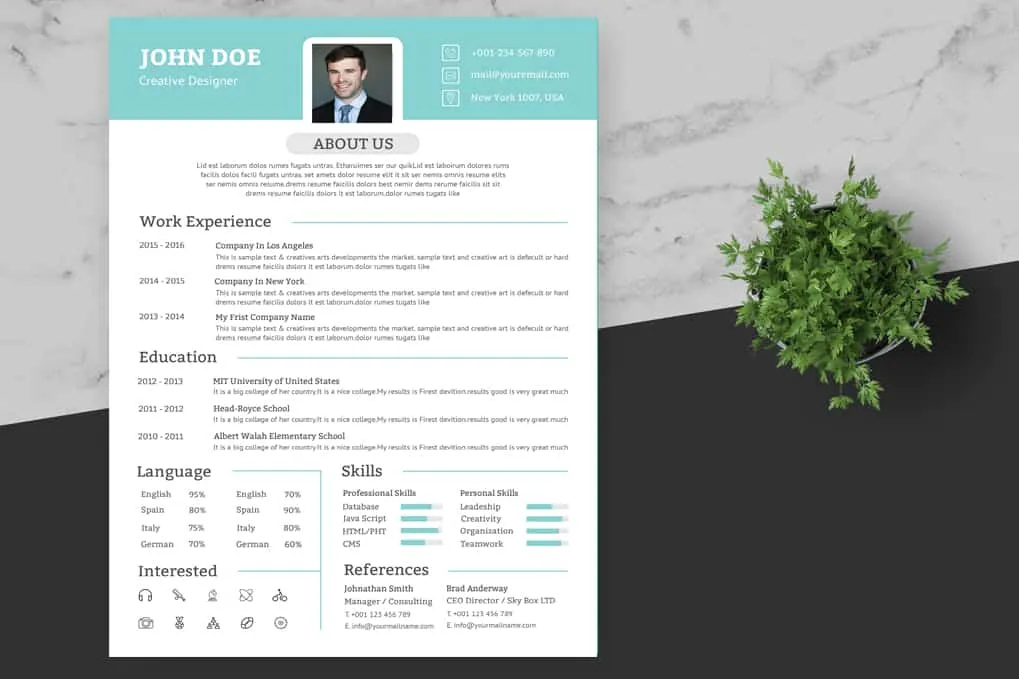Cover Letter Senior Manager The Essentials
A cover letter is an essential component of any senior manager job application. It serves as your first introduction to the hiring manager, providing an opportunity to showcase your qualifications, experience, and leadership capabilities. Unlike a resume, which provides a factual overview of your career, a cover letter allows you to express your personality, explain your motivations, and demonstrate how your skills align with the specific requirements of the role. A well-crafted cover letter can significantly increase your chances of securing an interview, ultimately leading to a job offer. Mastering the art of writing a compelling cover letter for a senior manager position is, therefore, a critical step in advancing your career.
Researching the Senior Manager Position
Before you start writing, thorough research is essential. Carefully review the job description, paying close attention to the specific skills, experience, and qualifications the employer is seeking. Understand the company’s mission, values, and culture. Visit their website, read news articles, and browse their social media profiles to gain insights into their operations and goals. This research will enable you to tailor your cover letter to the specific requirements of the position and demonstrate your genuine interest in the company. It shows you’ve gone the extra mile, which hiring managers appreciate. Identify key challenges and opportunities that the senior manager will face, and consider how your skills and experience can help address those. This preparation is key to making your application stand out.
Key Responsibilities of a Senior Manager
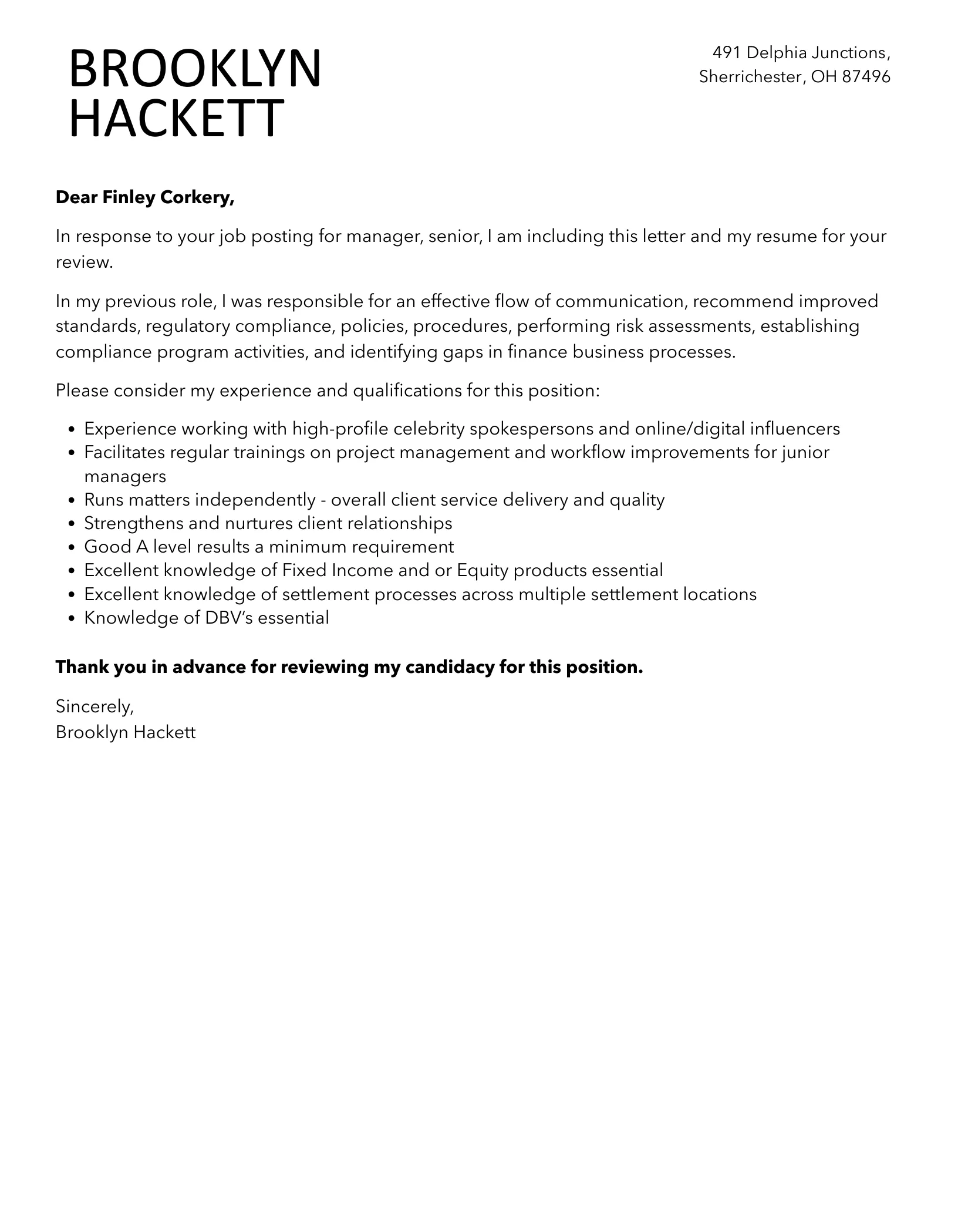
Senior managers typically oversee a team or department, with responsibilities that can include strategic planning, budgeting, performance management, and project oversight. They are expected to make critical decisions, drive business objectives, and ensure that their teams achieve their goals. Demonstrating an understanding of these responsibilities is crucial. Common duties include developing and implementing strategic plans, managing budgets and resources, leading and mentoring teams, monitoring performance metrics, and ensuring compliance with company policies and industry regulations. Highlighting your experience in these areas helps the hiring manager see how you will contribute to the company’s success.
Tailoring Your Cover Letter
A generic cover letter will not impress a hiring manager. Tailor each cover letter to the specific job and company. Use keywords from the job description to demonstrate that you possess the required skills and experience. Avoid using the same template for every application. Instead, customize your letter to reflect the unique requirements of each position. Mention specific projects, accomplishments, or challenges you’ve faced that are relevant to the role. Customize your letter to reflect the unique requirements of each position. This level of personalization shows the hiring manager that you have a genuine interest in the role and have taken the time to understand their needs.
Highlighting Relevant Skills
Senior manager roles require a combination of hard and soft skills. In your cover letter, highlight both. Hard skills might include project management, financial analysis, or strategic planning. Soft skills encompass leadership, communication, problem-solving, and decision-making abilities. Provide specific examples of how you’ve utilized these skills in previous roles. Quantify your achievements whenever possible. For example, instead of saying “Improved team performance,” state “Increased team productivity by 15% within six months.” Demonstrate your proficiency in relevant software, methodologies, or industry-specific knowledge. Tailor your cover letter to the specific requirements outlined in the job description.
Showcasing Leadership Experience
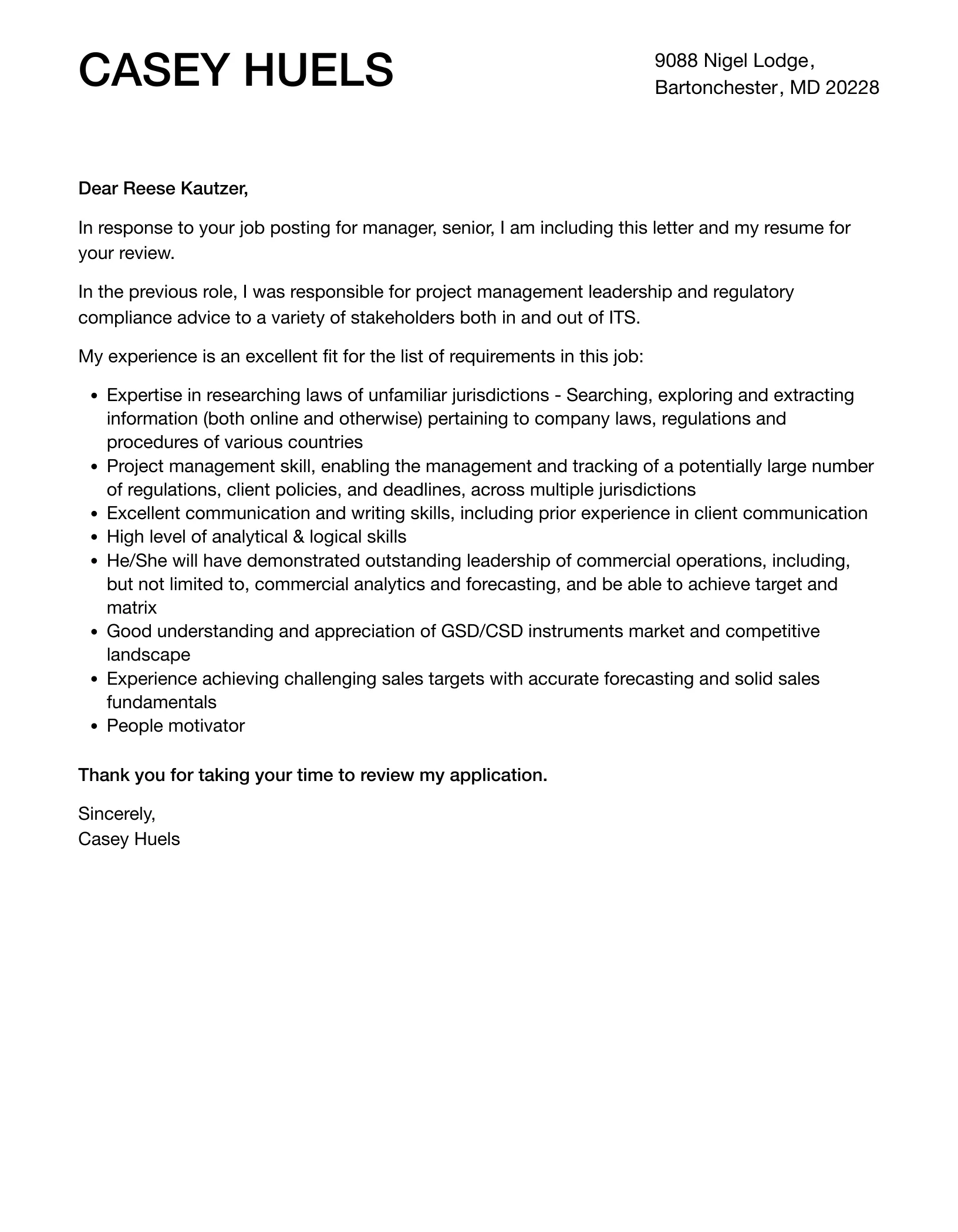
Leadership experience is paramount for senior manager positions. In your cover letter, provide examples of how you’ve led teams, managed projects, and achieved results. Describe your leadership style and how you motivate and inspire your team members. Highlight instances where you’ve successfully guided teams through difficult situations, implemented new strategies, or exceeded performance targets. Use the STAR method (Situation, Task, Action, Result) to provide context, explain your responsibilities, detail your actions, and showcase the outcomes. This structured approach makes it easy for hiring managers to understand your contributions. Focus on your ability to build high-performing teams, foster a positive work environment, and drive organizational success.
Quantifying Achievements for Impact
Numbers speak louder than words. Whenever possible, quantify your accomplishments. Use metrics and data to demonstrate the impact of your work. Instead of saying “Improved customer satisfaction,” state “Increased customer satisfaction scores by 20% through the implementation of a new customer service strategy.” Provide specific examples of how you’ve saved costs, increased revenue, or improved efficiency. Use percentages, dollar amounts, and other quantifiable metrics to showcase your achievements. This makes your cover letter more compelling and demonstrates the tangible value you can bring to the organization. Quantitative achievements are easier for hiring managers to recognize and appreciate.
Structuring Your Cover Letter
A well-structured cover letter is easy to read and understand. The standard format includes an opening paragraph, 2-3 middle paragraphs, and a closing paragraph. Maintain a professional tone throughout. Use a clear and concise writing style, avoiding jargon and overly complex sentences. Keep your paragraphs short and to the point. Use bullet points to highlight key skills and accomplishments. Ensure your letter flows logically, guiding the reader through your qualifications and experience. Make sure to include your contact information, the date, and the hiring manager’s name (if known).
Opening Paragraph Strategies
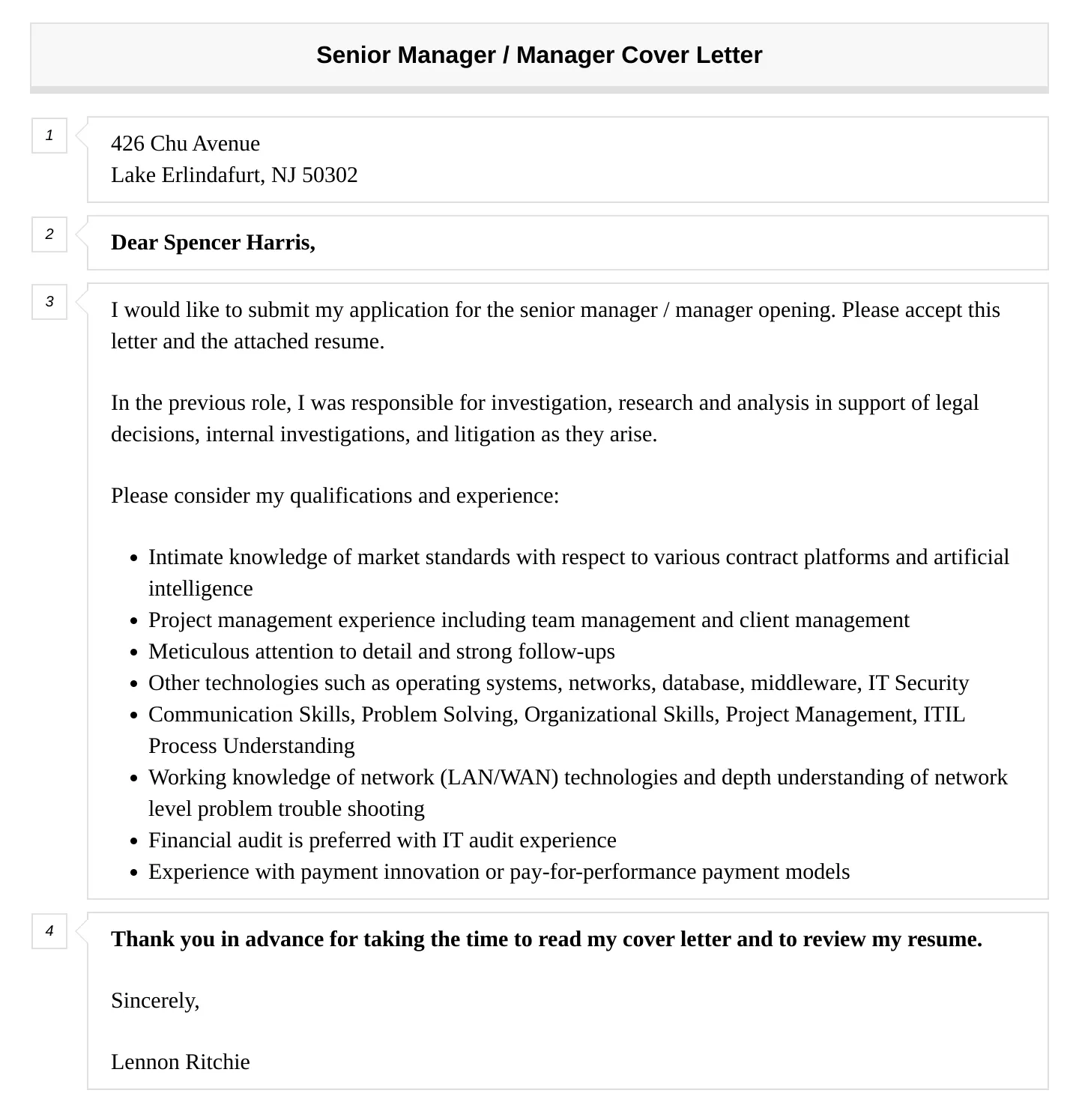
The opening paragraph sets the tone for your entire cover letter. It should immediately capture the hiring manager’s attention and clearly state your interest in the position. Mention the specific role you’re applying for and where you found the job posting. Briefly highlight your most relevant qualifications. You can start with a strong statement that demonstrates your enthusiasm for the company or role. Avoid generic openings like “I am writing to express my interest…” Instead, consider stating your understanding of the company’s challenges and how your experience aligns. A compelling opening can make all the difference.
Middle Paragraph: Skills and Experience
The middle paragraphs are the heart of your cover letter. They should elaborate on your skills, experience, and accomplishments. This section should focus on matching your qualifications to the job requirements. Refer back to the job description and select a few key skills or experiences that are most relevant to the role. Provide specific examples of how you’ve used these skills to achieve results in your previous positions. Use the STAR method to describe your experiences. Show how your accomplishments have benefited previous employers, and how you expect to deliver similar results for the new company. Emphasize how you can solve the company’s problems and contribute to their success.
Closing Paragraph: Call to Action
The closing paragraph should reiterate your interest in the position and clearly state your desire for an interview. Thank the hiring manager for their time and consideration. Reiterate your value proposition by briefly summarizing your key strengths and how they align with the job requirements. Include a call to action, such as “I am eager to discuss how my skills and experience can contribute to your team. I am available for an interview at your earliest convenience.” End with a professional closing, such as “Sincerely” or “Best regards.” Proofread the entire letter before sending it.
Formatting and Proofreading
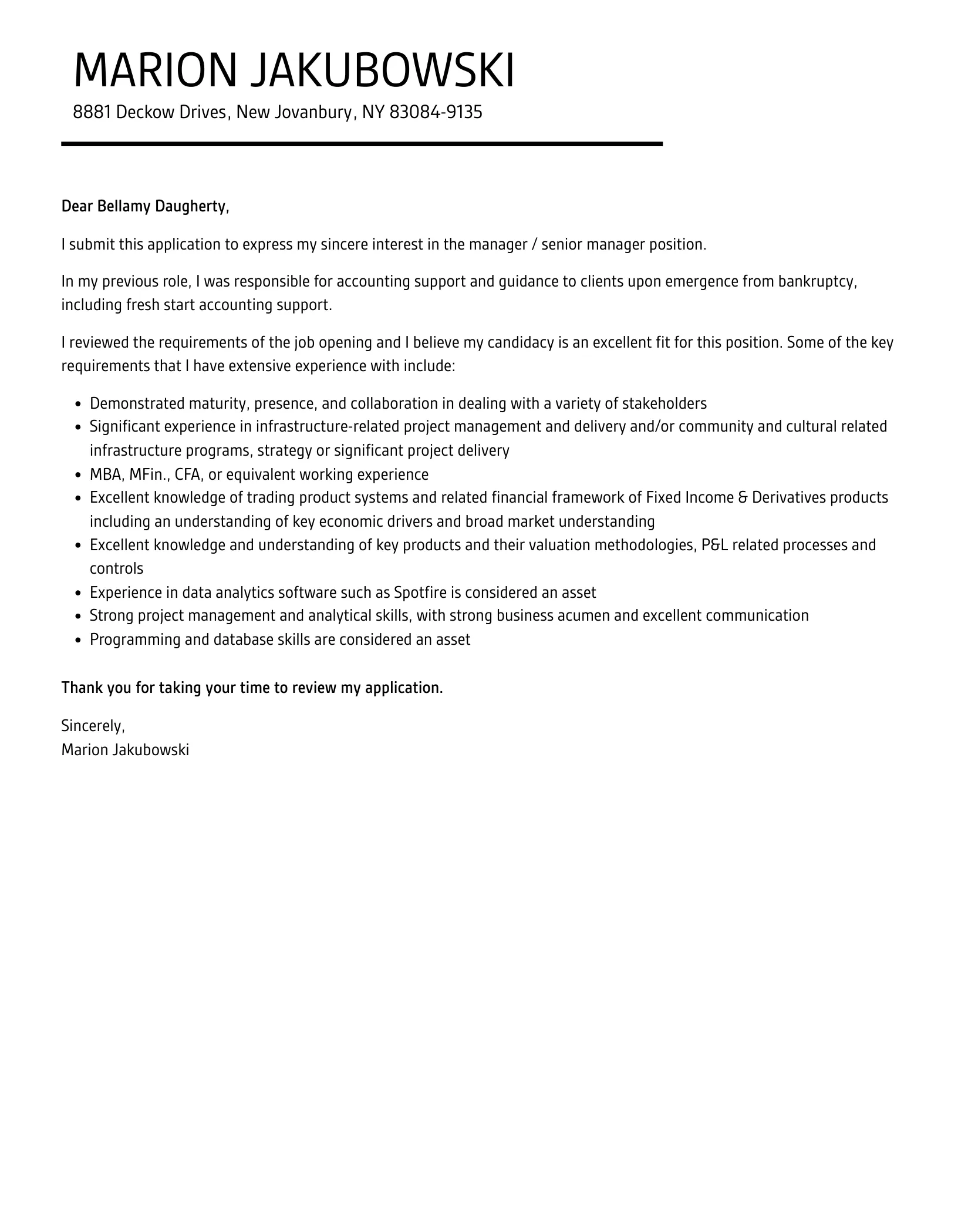
A well-formatted cover letter looks professional and demonstrates attention to detail. Choose a clean and readable font, such as Arial, Calibri, or Times New Roman, with a font size of 11 or 12 points. Use standard margins (1 inch on all sides) and single-space your text. Ensure your letter is free of grammatical errors, typos, and formatting inconsistencies. Proofread your letter carefully before submitting it. Use spell check and grammar check tools, but also read your letter aloud to catch any errors that might be missed by software. Consider asking a friend or colleague to review your cover letter.
Formatting for Readability
Easy readability is key to ensuring your cover letter makes a strong impression. Break up large blocks of text with paragraphs, bullet points, and white space. Use headings and subheadings to organize your information and make it easier for the hiring manager to scan your letter. Keep your sentences and paragraphs concise. Avoid using overly complex language or jargon. Ensure your formatting is consistent throughout the document. Use bold text to emphasize key skills, experience, and accomplishments. Pay attention to the overall visual appeal of your letter. A well-formatted letter is a sign of professionalism and attention to detail.
Proofreading for Errors
Proofreading is a critical step that should not be overlooked. Errors in your cover letter can make a negative impression and undermine your credibility. Proofread your letter multiple times, checking for spelling mistakes, grammatical errors, punctuation errors, and formatting inconsistencies. Read your letter aloud to catch any awkward phrasing or unclear sentences. Ask a friend, family member, or career advisor to review your letter for errors. Pay close attention to the details, such as the hiring manager’s name, company name, and job title. A well-proofread cover letter demonstrates that you are meticulous and professional, essential qualities for a senior manager.
Examples of Effective Senior Manager Cover Letters
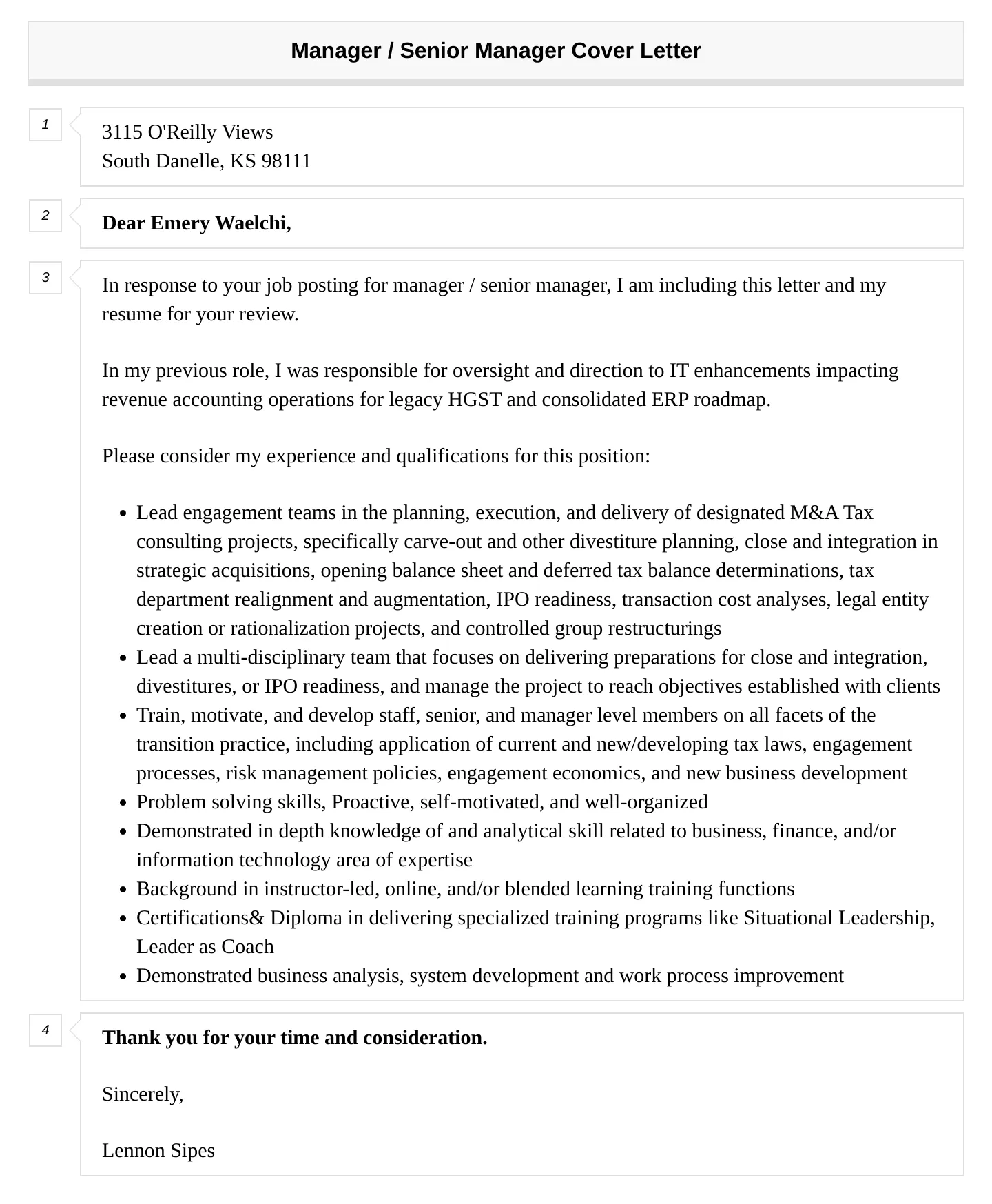
Reviewing examples of effective cover letters can provide valuable insights into how to structure your own letter and highlight your qualifications. Look for examples that are tailored to specific roles and industries. Pay attention to how the writers showcase their skills, experience, and achievements. Analyze the language, tone, and format of the letters. Note how the writers use keywords and quantify their accomplishments. Many websites and online resources offer cover letter examples. Use these examples as a guide to create your own compelling cover letter. Adapt the examples to reflect your unique skills and experiences.
Analyzing Successful Cover Letters
Analyzing successful cover letters helps you understand what makes them stand out. Identify common elements, such as a clear introduction, a strong value proposition, and a compelling call to action. Note how the writers address the hiring manager and the company’s needs. Pay attention to the use of keywords and the way the writers quantify their achievements. Analyze how the writers showcase their leadership experience and relevant skills. Focus on how they tailor the letters to specific roles and industries. Consider how the letter reflects the writer’s personality and communication style. Identify how they demonstrate their enthusiasm for the role and the company. Understanding these elements will help you craft a more effective cover letter.
Common Mistakes To Avoid
Avoid common mistakes that can undermine your cover letter. Do not send a generic cover letter; always tailor it to the specific job and company. Avoid simply restating your resume; use the cover letter to elaborate on your qualifications and explain your motivations. Do not make spelling or grammatical errors. Avoid using jargon or overly complex language. Do not be overly lengthy; keep your letter concise and to the point. Avoid being negative or critical of previous employers. Do not include irrelevant information. Avoid using clichés or generic phrases. By avoiding these common pitfalls, you can increase the chances of your cover letter making a positive impression.
Addressing the Hiring Manager
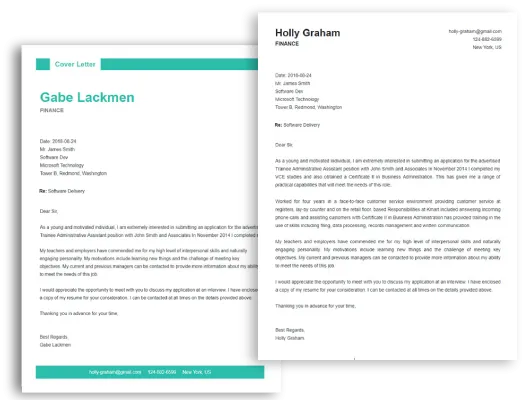
Addressing the hiring manager by name shows that you’ve taken the time to research the company and the position. If possible, find out the name of the hiring manager or the person who will be reviewing your application. You can often find this information on the company’s website, LinkedIn, or the job posting. If you can’t find a specific name, use a general salutation, such as “Dear Hiring Manager.” Avoid using generic salutations like “To Whom It May Concern.” Using a personal salutation makes your cover letter feel more personable and shows that you’re genuinely interested in the opportunity. It is another small detail that can help you stand out.
Using Keywords Strategically
Use keywords strategically to increase the chances of your cover letter getting noticed by applicant tracking systems (ATS) and hiring managers. Carefully review the job description and identify the key skills, experience, and qualifications the employer is seeking. Incorporate these keywords into your cover letter, using them naturally and avoiding keyword stuffing. Use keywords in your summary statement, in the body of your letter, and in your closing paragraph. Ensure your keywords are relevant to the role and reflect your true skills and experience. By strategically using keywords, you can demonstrate that you possess the qualifications and experience the employer is seeking.
Following Up After Submission
Following up after submitting your cover letter and resume shows your continued interest in the position. After submitting your application, wait about a week or two before following up. Send a brief email to the hiring manager or recruiter, reiterating your interest in the role and highlighting a key qualification. Thank them for their time and consideration. Be polite and professional in your communication. Avoid being overly persistent or annoying. Following up shows your commitment and helps ensure your application hasn’t been overlooked. If you don’t hear back after a reasonable time, consider it a missed opportunity and move on.
